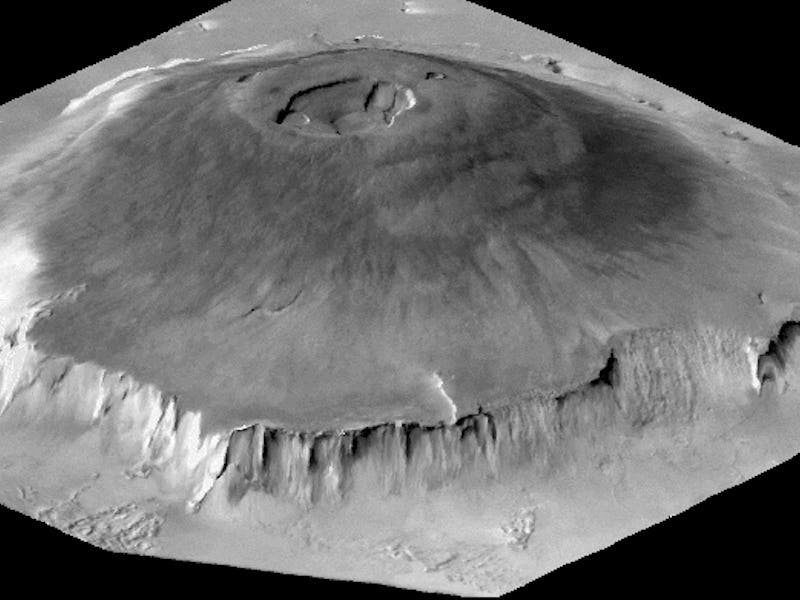Mars has some Large Adult Sons — its freakishly huge volcanoes that make our biggest mountains look like blemishes. While scientists have a general understanding of why Martian volcanoes got so big, new research based on meteorite analysis could clue us into how long it took them to grow.
A team of researchers led by Benjamin Cohen of the Scottish Universities Environmental Research Centre (SUERC) studied nakhilite meteorites from a Martian volcano to find out more about their source. Nakhilite meteorities are igneous rocks that form from after magma from a Martian volcano cools. The group estimates that these particular meteorites came from an impact event that took place 10.7 million years ago. Based on this information, the team reconstructed the growth of the volcano the meteorites came from — by their calculations, the volcano at a rate of 0.4–0.7 meters per million years, which means they grew about a thousand times slower than comparable volcanoes here on Earth. The researchers’ findings were published on Tuesday in Nature Communications.
“Studying Martian volcanoes provides us with a valuable comparison with our own planet,” lead author Benjamin Cohen tells Inverse. “Mars is a rocky world like Earth, so examining the similarities and differences between the two planets is very helpful. This slow rate [on Mars] is too low to have formed the massive Martian volcanoes, so Mars must have been more volcanically active earlier in its history.”
Since Mars lacks tectonic plates — which cause events like earthquakes on our planet — its surface stays pretty much put. This means that magmas can flow through the same part of Mars’ surface, building gigantic volcanoes over the course of many years. As this new research suggests, that can take a really, really, really long time.
“Mars has the largest volcanoes in the Solar system,” says Cohen. “The largest is Olympus Mons, which towers 22 kilometers above the surrounding plains, which is over 2.5 times taller than Mount Everest. Even at its narrowest point it is 640 kilometers wide, which is greater than the distance between Los Angeles and San Francisco.”
So if you’re ever feeling lonely and insignificant, remember that there are enormous volcanoes on Mars that are completely indifferent to your problems. Perspective is important.
If you liked this article, check out this video of a hole on Mars that could be home to martian life.
